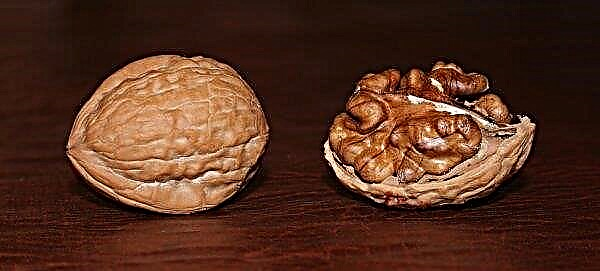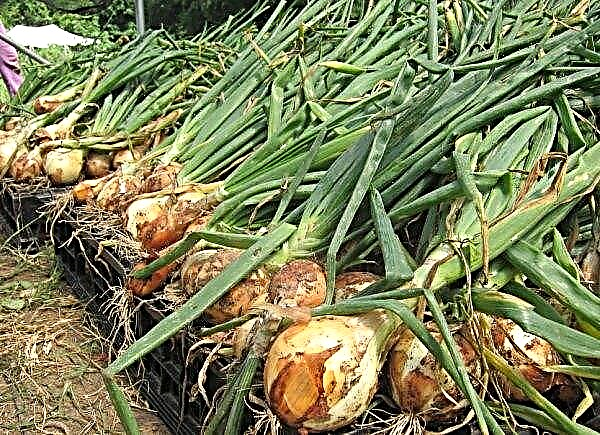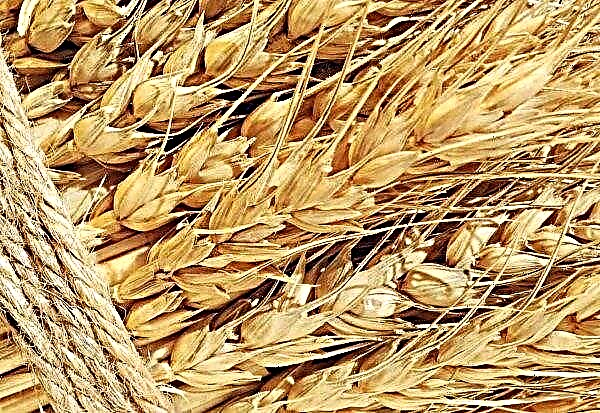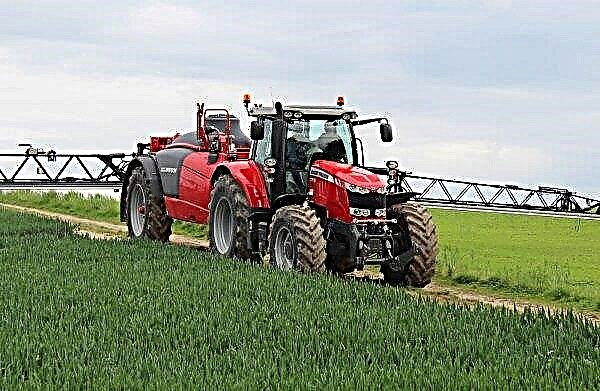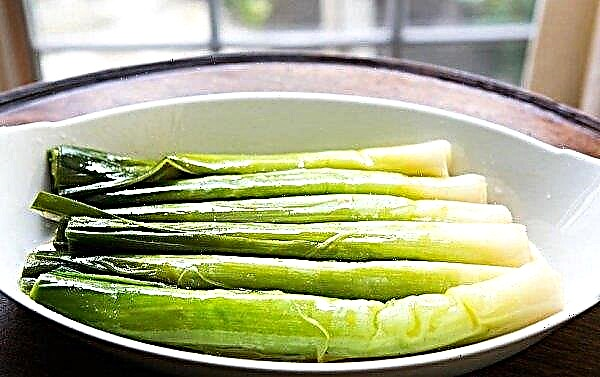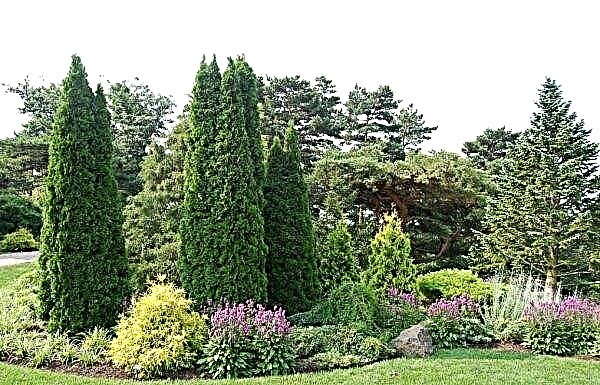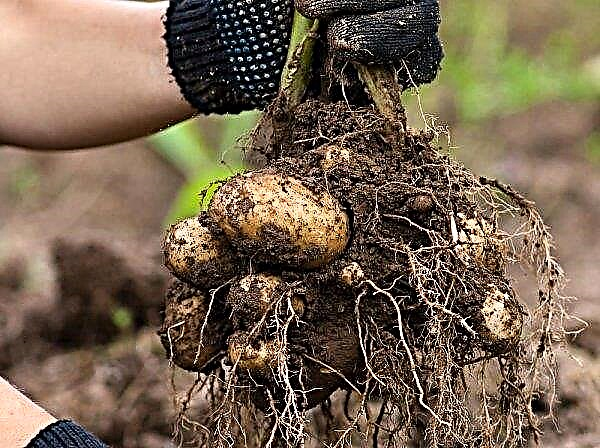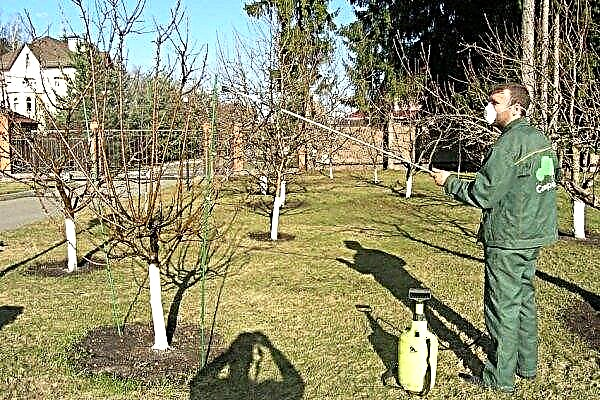Potatoes are one of the most popular crops for home growing. For each owner, potatoes grown in his own garden will be the most delicious and healthy, because it is grown without chemical fertilizers or GMOs. However, this does not exclude the appearance of various problems during cultivation, for example, yellowing of potato tops. Why this is happening and how to deal with such a phenomenon, read the article.
Why leaves turn yellow in potatoes: the main reasons
Following the state of potato tops, it is possible to draw conclusions about the quantity and quality of the future crop ahead of time.
If its premature yellowing has begun, this means that you can not hope for a large crop, but you should think about what caused yellowing. It can be both bad weather conditions during the season, lack of fertilizer, and various diseases.Did you know? In Minsk (Belarus) in the early 2000s, a monument to potatoes was unveiled.
Unsuitable temperature and humidity
The main and most common cause of yellowing of potato leaves is the non-compliance with the optimum temperature and humidity, which causes yellowing of the lower leaves, and then the whole bush dries.

In July, due to severe drought and temperatures above 30–35 degrees, the metabolism worsens in potatoes, as a result, the fruits do not receive the nutrients they need for growth, and future yields decrease sharply.
The most vulnerable bushes are during flowering; for a good harvest, it is precisely at this time that they need to be provided with sufficient moisture. To find out if potatoes should be watered, soil moisture should be measured, it should be from 60 to 80%.
The best conditions for the growth of potatoes will be a temperate climate and average temperature, which is supplemented with enough moisture to provide an optimal value of 70%.Fertilizer deficiency
Yellowing of potato leaves may begin as a result of a lack of useful substances and minerals in the soil, which are necessary for the full development of the crop.
Usually it is the crop that is deficient in such substances as:
- potassium - insufficient amount of this element in the soil leads to disruption of the photosynthesis process, the resistance of plants to drought worsens and its immunity decreases, which causes yellowing of the leaves. To prevent this, it is necessary to apply potash fertilizers to the soil in the fall or spring, 1 kg per hundred square meters of land. They will not only improve the immunity of the plant, but also taste and increase the shelf life of potatoes;
- nitrogen - the lack of this element is manifested in the gradual discoloration of the leaves, followed by yellowing and falling off the stem. This can be prevented by adding nitrogen-containing fertilizers to the soil, it will be enough 50 g per 1 square. m. This will provide the potato with the forces to build green mass and form a large tuber with a better developed root system;
- phosphorus - with a lack of this element, the development of potato bushes slows down noticeably, and the leaves begin to turn yellow. To prevent this from happening, it is necessary to apply superphosphate in the fall at the rate of 0.9 kg per hundred square meters of land. This will help the bushes better tolerate heat, the root system develops faster, and the starch content in the tubers increases;
- manganese and iron - low content of these elements will lead to wilting of plants. This can be prevented if the bushes are sprayed with a solution of copper sulfate, 50 g per 10 liters of water. It is also necessary to pour each bush with a solution, which includes 5 g of potassium sulfate and 10 liters of water. These measures need to be carried out once a week until positive changes are noticeable and the external state of the plants is normalized.
Diseases
Yellowing leaves may be associated with plant diseases.
Fusarium
If the plant begins to yellow leaves from the top of the bush, this may indicate the development of fusarium. If potatoes show signs of this disease, it must be destroyed, since it is impossible to save such a plant. The disease develops best in cold climates and in the presence of high soil moisture.
In order to protect plants from this disease, it is necessary to subject the planting material to treatment with disinfectants.
Phytophthora
The first sign of late blight is the early yellowing leaves of the lower part of the bush. Also, the leaves around the edges will be in black spots, which subsequently spread throughout the plant, and it will begin to dry.
To prevent this disease, potatoes must be treated with fungicides. Infected tubers must be disposed of, as they are not suitable for human consumption or other purposes.
Important! It should be borne in mind that the last treatment of potatoes with fungicides must be carried out no later than 20 days before the start of the harvest.
Dry spotting
The disease manifests itself 2-3 weeks before flowering in the form of brown spots on the tops, which gradually increase. This disease can be determined by the presence of yellowed tops.
The reason for the appearance of this particular disease is a fungus, to combat which should be used drugs such as "Ridomil" or "Quadrice".
Verticillus wilting
This virus is activated at an ambient temperature of +17 to +23 degrees. You can identify this disease if you cut off the stem of the plant. In the affected bush, dark spots will be noticeable on the cut.
As in the case of the first disease, it is impossible to save the infected plant, and it is necessary to dig up and destroy it outside the garden as soon as possible. You can only carry out preventive actions in the form of processing potatoes with copper chloride.
Pests
The most common cause of yellowing of the leaves is not a disease, but the action of pests. Consider the most dangerous parasites and methods of dealing with them.
Did you know? The first vegetable that was grown in zero gravity at the Columbia space station was potato.
Colorado beetle
This pest is the most common. It eats the green ground part of the plant, which subsequently leads to its withering. To combat it, drugs such as Komandor or Iskra are used.
These preparations must be diluted in water according to the instructions and sprayed onto the leaves of the bushes. It is important that there is no rain on the day of spraying, as it will wash off the solution, and this will significantly impair the effectiveness of the product.
Also, in order to get rid of the beetle, you can plant nearby plants such as calendula, beans, tansy. They have a pungent odor that is unpleasant for the Colorado potato beetle and repels it. If you do not take any measures to combat this pest, then in early August, nothing will remain of the green mass of potatoes.
Nematode
It harms potatoes by the fact that, being in the soil, it feeds on the juice of the root system of the tuber. Thus, the leaves are not able to receive a sufficient amount of nutrients and elements, as a result of which the process of yellowing of the leaves occurs, and they fall early. The nematode is capable of destroying up to 70–80% of the total crop. To combat it, peas, oatmeal, and rye are planted next to a potato plantation.
Important! If at the potato bushes even before the harvest starts the leaves from the bottom turn yellow, then next year these fruits should not be used for planting.
What to do and how to deal with yellowing on potatoes
If you notice a slight yellowing on the leaves of the potato, you must immediately take action to save your future harvest. Depending on what caused the yellowing, it is necessary to use various means:
- The best option to combat drought is the establishment of an irrigation system. This option will provide your plants with water, despite even the long absence of rain.
- To fight diseases it is necessary to carry out regular processing of tops with special solutions and destroy plants that can no longer be saved so that they do not become the epicenter for infection of other neighboring plants.
- In the case of pest control An effective option for planting nearby plants that have a repelling odor for pests. You should also process potatoes before flowering or planting with special solutions.

Preventative measures
The following activities will serve to prevent yellowing of potato leaves:
- Use of fungicides during flowering of potatoes, for example, Cuproxat or similar products.
- The use of garlic solution for spraying. To prepare it, you need to chop 350-400 g of garlic and add 1 liter of hot water, let it brew for 1 day. After diluting the solution in 10 l of water and spraying 3 times a month.
- Choose for planting varieties of potatoes with the best immunity to the diseases that are common in your area.
- Loosening the soil to saturate it with oxygen.
Useful Tips
For successful growing potatoes, use effective tips:
- before planting potatoes, it is necessary to pre-fertilize the beds with a mixture of chicken manure and manure with the addition of soil;
- treat the area with chicken manure solution with water. It is necessary to make at least 10 liters of solution per 1 sq. M .;
- use urea with fertilizers before planting potatoes in the ground. For every hundredth of the garden, at least 800 g of solution is needed.




